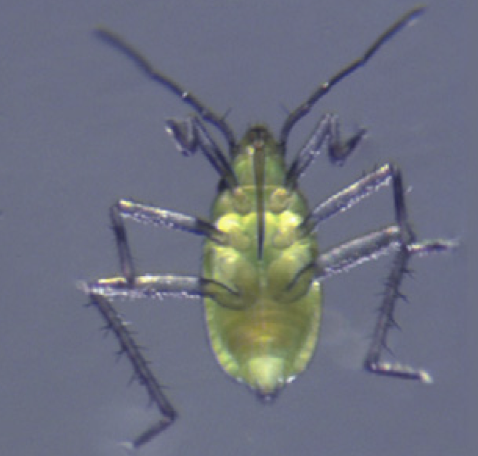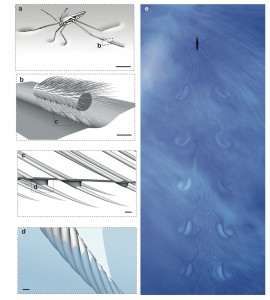The rough integument of water-walking arthropods is well-known to be responsible for their water- repellency; however, water-repellent surfaces generally experience reduced traction at an air– water interface. A conundrum then arises as to how such creatures generate significant propulsive forces while retaining their water-repellency. We here demonstrate through a series of experiments that they do so by virtue of the detailed form of their integument; specifically, their tilted, flexible hairs interact with the free surface to generate directionally anisotropic adhesive forces that facilitate locomotion. We thus provide new rationale for the fundamental topological difference in the roughness on plants and water-walking arthropods, and suggest new directions for the design and fabrication of unidirectional superhydrophobic surfaces. Indeed, the ingenious methods employed by insects and spiders to move across a water surface rely on microphysics that is of little use to larger water walkers but of considerable interest to the microfluidics community.
See paper: Prakash & Bush (2011) .

